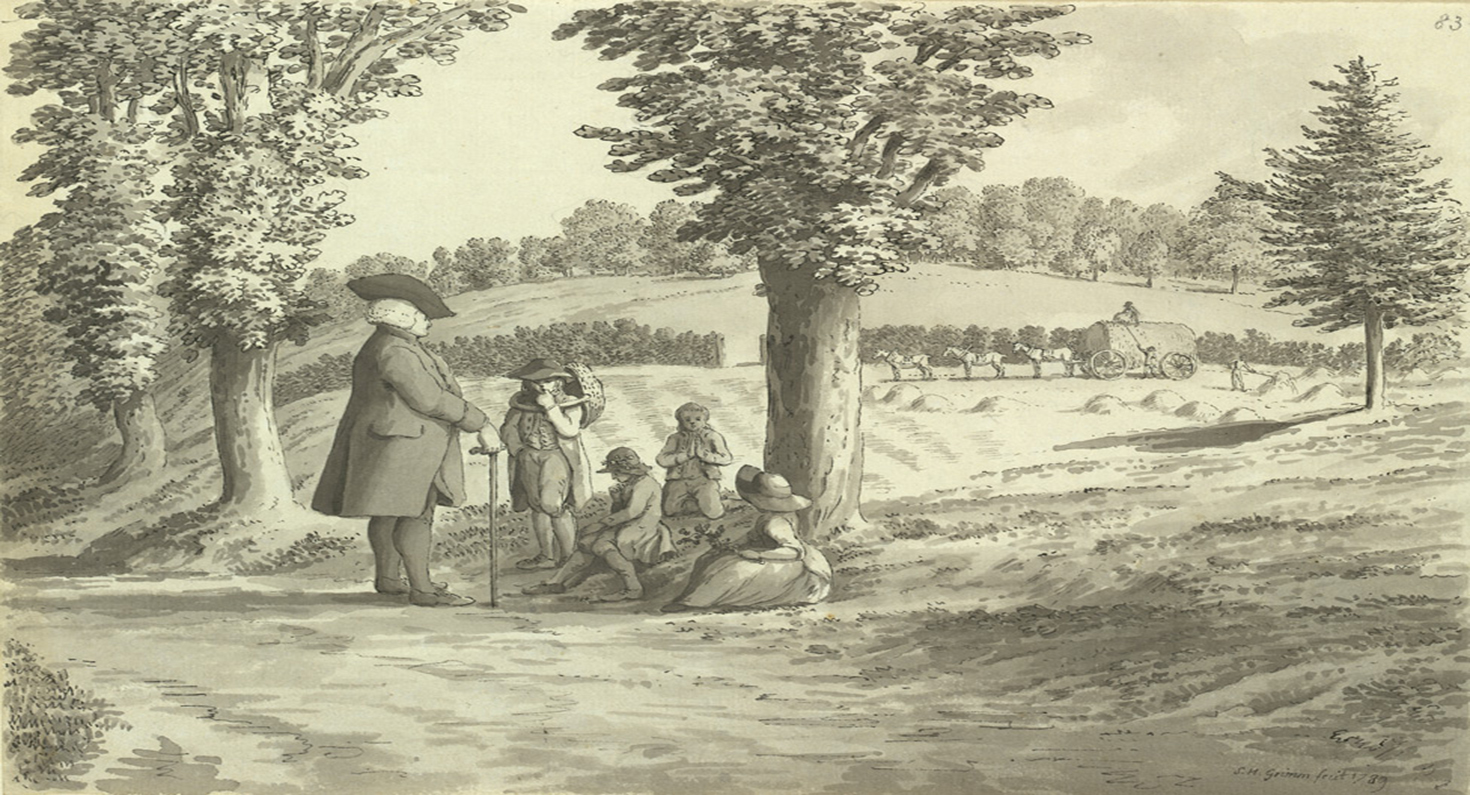
Children on the Road to Prior Park, by Samuel Hieronymus Grimm, 1789. The British Library.
A family of ten children will be always called a fine family, where there are heads and arms and legs enough for the number.
—Northanger Abbey
“Little Emma, grow up a better woman than your aunt. Be infinitely cleverer and not half so conceited.”
—Emma
“Don’t you think Austen rather hated children?” The man was short and well-dressed, and the twinkle in his eye was the look of a man preparing to provoke. We were standing on the second floor of a hotel in Montreal in between sessions of the annual general meeting of the Jane Austen Society of North America.
Open hostilities are frowned upon at such gatherings; better to get your satisfaction in print than in person. So I took a breath and told him simply that I’d heard this line before and that it was a rotten argument.
The man rolled his eyes, still smiling, as though indulging a forgivable hypocrisy on my part. “Ah, but you must have read the letters! All that business about mothers being animals and children being little beasts! I can’t help but think she found them repulsive.”
I was late for another talk and saw little to be gained from a full-on confrontation. The man’s speech had the air of practiced shtick. Clearly he congratulated himself on being able to trigger the Janeites as a bold teller of uncomfortable truths. I forced a smile and shook his hand, and the man toddled off to some other lecture, no doubt seeking his next victim.
Wherever there is hagiography, eager iconoclasts will be not far behind, beating the old pieties to bits—all for the common weal, or at least to settle a score. And the iconography of Jane Austen tempts vandals of any age. Her family has much to answer for here: it was her brother Henry who bowdlerized her biography in a notice that he appended to the posthumous publication of Northanger Abbey and Persuasion in 1817 ("Faultless herself, as nearly as human nature can be, she always sought, in the faults of others, something to excuse, to forgive or forget."). Her nephew James Edward Austen-Leigh offered a longer but hardly less saintly portrait in 1869. “Pictures of perfection, as you know, make me sick and wicked,” Austen wrote to her niece Fanny Knight in 1816, so perhaps her ghost allowed itself a smile when later biographers came forth to complicate the portrait offered by her family—to muss its hair, muddy its frocks, and draw out a creeping smirk in the fine lines of the mouth.
Plenty of Austen’s interpreters have worked, to one extent or another, in this mode of iconoclasm, many of them fruitfully (D.W. Harding, Virginia Woolf), some with prurience (Morris Zapp), and others with an overcorrection that seems to border on spite. A legendary entry in the last category is The Life of Jane Austen (1984), in which author John Halperin brought the full weight of his academic eminence to bear establishing that Austen had been petty and shrewish, embittered by spinsterhood and financial instability. By this account, her comic gifts had offered mere compensatory relief: miserable she might be (Halperin seemed to suggest), but at least she was not as ridiculous as the sentimental matrons she lampooned. “One does have the feeling, reading Jane Austen’s letters,” Halperin observes, “that the milk of human kindness was often kept in the larder, and the tea served with lemon.” Reviewing this radioactive volume in the London Review of Books, Brigid Brophy drew from Pride and Prejudice, comparing Halperin to that fool of a cleric Mr. Collins. It is the kindest paragraph in the review.
Halperin was bent on spreading dangerous ideas about Austen and young girls and boys. “As we know, she was never fond of children—especially young ones in large groups,” he writes; elsewhere he notes a dislike of “noisy children—a trait which became more pronounced in Jane as she grew older.” Today Halperin’s account has been succeeded, surpassed, and corrected by far worthier biographies by David Nokes and Claire Tomalin. But the Halperin school of thought on Austen and children still has its acolytes, including the well-dressed man who accosted me in Montreal. It’s high time we extirpated this line of thought: left to spread unchecked, the wrongheaded idea that Austen could not abide kids might lead future impressionable students to miss one of the most important animating elements in her novels.
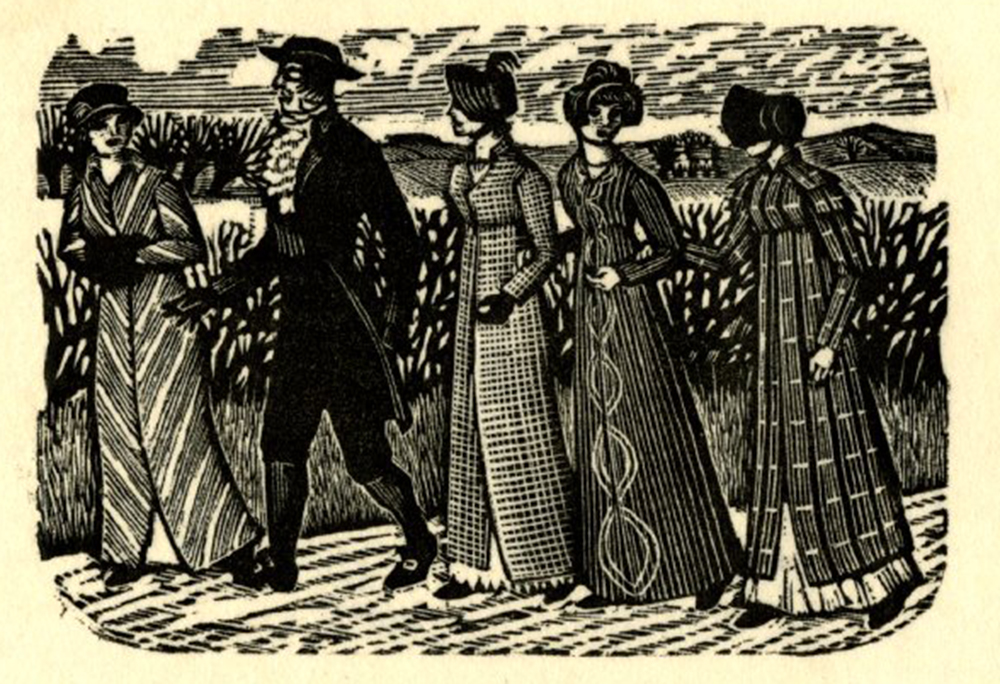
Austen’s use of badly behaved children tends less toward pedophobia and more toward biting comment on their elders. She reserves some of her most memorably vivid prose to record the ecstasies of childhood (see: Morland, Catherine; Price, Fanny). It is a fatal mistake to consider Austen a joyless, jaundiced harpy based only on a handful of acid statements about families and children in her novels and letters, and it becomes a graver error still when based in the lazy way that male critics tend to pathologize spinsters. This reading of Austen obscures the truth: she got along well with the young but had no illusions about how too many children will sap the life from all but the richest women, and it is this toll on the body and spirit that can make children inherently a bit monstrous. If children in Austen are sometimes terrifying, it is not because they are wicked but because they are expensive—and because, more than clothes or manners or physiognomy, they reveal, mercilessly, the character of the parents.
Austen’s Love of Children
According to nearly every available primary source, Austen was deeply fond of the children of her family and neighborhood—writing them poems, encouraging their games and amateur theater productions, and diverting them with stories. As her niece Anna Austen wrote to J.E. Austen-Leigh while he was preparing his 1869 biography of their aunt, “Aunt Jane was the general favorite with children; her ways with them being so playful, & her long circumstantial stories so delightful! These were continued from time to time, & begged for of course at all possible or impossible occasions; woven, as she proceeded out of nothing, but her own happy talent for invention. Ah! if but one of them could be now recovered!”
We find a no less rosy portrait of Austen’s fondness for children in a pair of late nineteenth-century letters written by a woman whose family had leased the estate of Austen’s brother from 1808 to 1815, when she was a child. “Altogether I remember we liked her greatly as children from her entering into all Games &c.,” the woman recalls, and in a subsequent letter described her as “a most kind & enjoyable person to Children but somewhat stiff and cold to strangers…Her Sister Cassandra was very ladylike but very prim, but my remembrance of Jane is that of her entering into all Children’s Games & liking her extremely.” It is perhaps no wonder that strangers in these years might find Austen stiff or even imposing; more than one visitor suspected a watchful Austen of using visits and mealtimes as material for her novels—the kind of espionage that will always make adults uncomfortable.
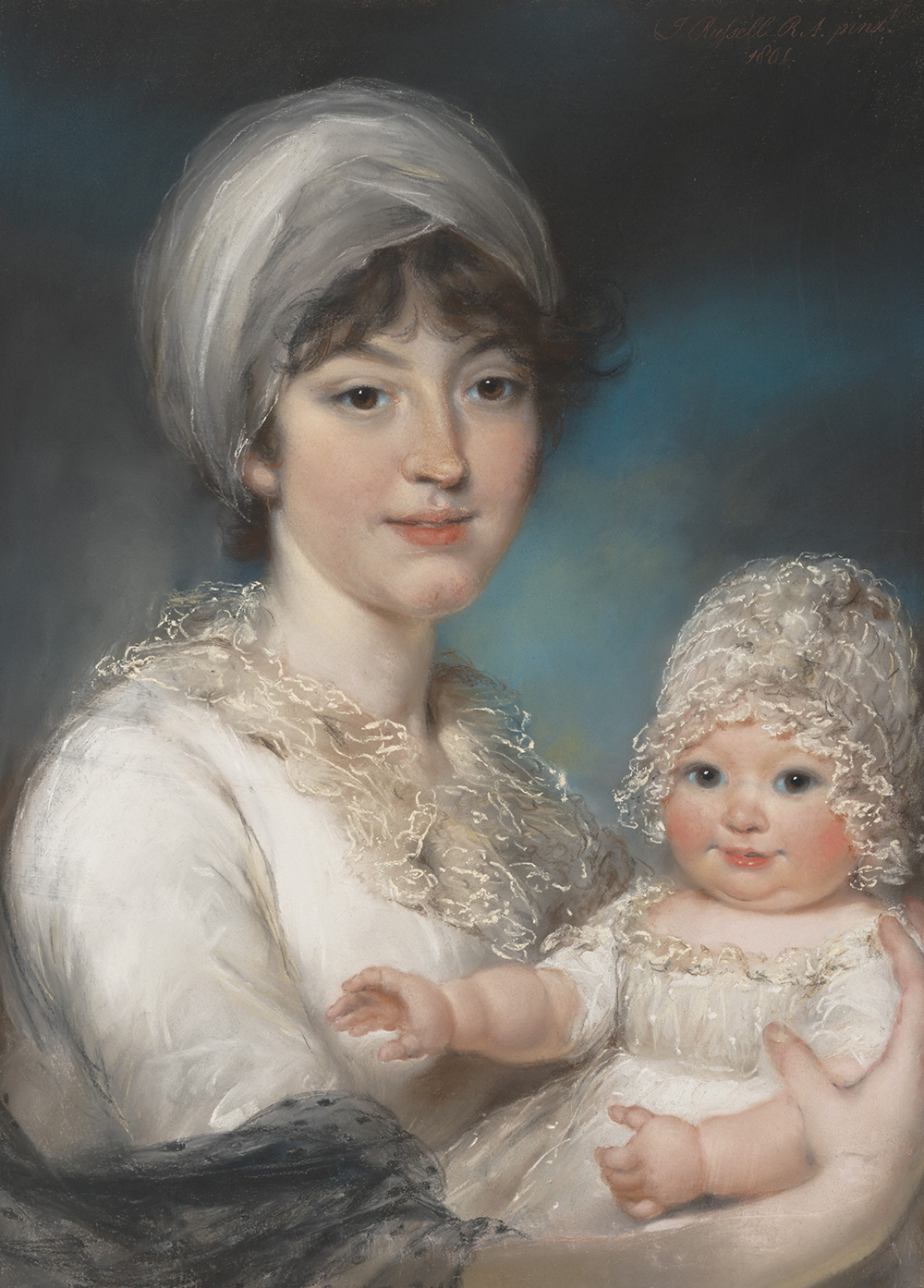
For any of the various critics I’ve encountered at Austen conferences making uninformed remarks about Austen’s allegedly shriveled spinster-heart that prevented her from loving children, perhaps the simplest rebuttal is to remind them that Austen, having spent parts of her own childhood writing and performing plays with her brothers and neighbors, spent considerable time as an adult encouraging and participating in the plays staged by her nieces and nephews. Anyone who has observed or joined in theater-making among children and teens will know how much patience is required to sustain it, let alone to cheer on the participants through the dress rehearsals. I know people who would rather wrestle a giant jellyfish. Put mildly, it’s not the sort of thing one does for fun if one can’t stand children—and more often it’s the province of those enlightened souls who actively draw energy from the younger set.
Yet the accusations of being a shrew continue to dog Austen. In his book Guardians and Angels: Parents and Children in Nineteenth-Century Literature, David Grylls argues that Austen’s “view of parent-child relations is profoundly pre-Romantic. She reveals in her fiction little belief in the wisdom or innocence of children and what she prizes most in children is obedience and respect.” The bit about obedience and respect is generously interpreted as an oversimplification. We get a fuller and more plausible reading from the literary scholar Juliet McMaster, who captures the subtleties of Austen’s pre-Romantic view quite nicely, explaining that, unlike Wordsworth, Austen did not see “the child as sacred, ‘trailing clouds of glory,’ but she recognized children as distinct and valuable personalities, deserving attention and respect as adults do—and more than some adults.”
Bad Children: The Case of Lady Middleton
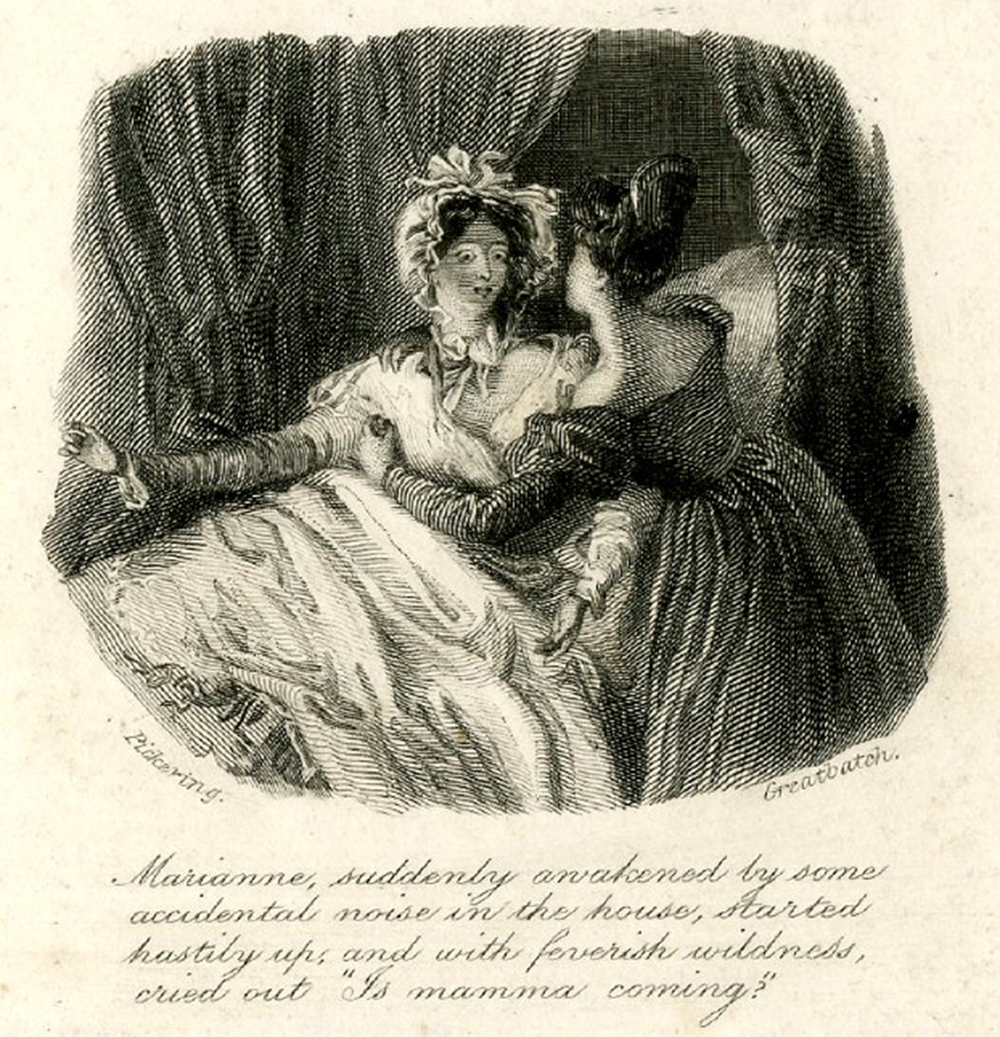
The most odious children in Austen’s six novels are probably the children of Sir John and Lady Middleton in Sense and Sensibility. The root of the children’s monstrosity is that they were born with the misfortune to be spoiled by their wealthy parents, whose deep material comfort corresponds to a curious lack of imagination and inner resource:
However dissimilar in temper and outward behavior, [the couple] strongly resembled each other in that total want of talent and taste which confined their employments, unconnected with such as society produced, within a very narrow compass. Sir John was a sportsman, Lady Middleton a mother. He hunted and shot, and she humored her children; and these were their only resources. Lady Middleton had the advantage of being able to spoil her children all the year round, while Sir John’s independent employments were in existence only half the time…Lady Middleton seemed to be roused to enjoyment only by the entrance of her four noisy children after dinner, who pulled her about, tore her clothes, and put an end to every kind of discourse except what related to themselves.
It is boredom and stupidity that lead the couple to spoil their children, but it is genetic vanity that leads Sir John and Lady Middleton to inflict the children on their neighbors:
A fond mother, though, in pursuit of praise for her children, the most rapacious of human beings, is likewise the most credulous; her demands are exorbitant; but she will swallow anything; and the excessive affection and endurance of the Miss Steeles towards her offspring, were viewed therefore by Lady Middleton without the smallest surprise or distrust. She saw with maternal complacency all the impertinent encroachments and mischievous tricks to which her cousins submitted. She saw their sashes untied, their hair pulled about their ears, their work-bags searched, and their knives and scissors stolen away, and felt no doubt of its being a reciprocal enjoyment.
Amid the fine economy of the scene’s comic pacing, Austen offers a perceptive portrait in miniature of the process by which bad parenting teaches a child that there is more to be gained by being a demon than an angel. In two pages, the reader receives a play-by-play lesson in how to reward a child for bad behavior:
“And here is my sweet little Annamaria,” she added, tenderly caressing a little girl of three years old, who had not made a noise for the last two minutes; "And she is always so gentle and quiet—Never was there such a quiet little thing!"
But unfortunately, in bestowing these embraces, a pin in her ladyship’s head-dress slightly scratching the child’s neck, produced from this pattern of gentleness such violent screams as could hardly be outdone by any creature professedly noisy. The mother’s consternation was excessive; but it could not surpass the alarm of the Miss Steeles, and everything was done by all three, in so critical an emergency, which affection could suggest as likely to assuage the agonies of the little sufferer. She was seated in her mother’s lap, covered with kisses, her wound bathed with lavender-water, by one of the Miss Steeles, who was on her knees to attend her, and her mouth stuffed with sugar-plums by the other. With such a reward for her tears, the child was too wise to cease crying.
It’s high comedy, this succession of palliative rites performed by supposedly rational adults, in part because the adults are treating it as high tragedy. (It is tempting to recall Alexander Pope’s The Rape of the Lock, where an epic army is marshaled to protect a single lock of hair.) The scene is a dramatization of a simple truth of child-rearing: let the baby cry until she or he stops. This is not a hatred of children; it is seeing things from the child’s point of view. The most vivid—and “wise”—character in the scene is Annamaria.
Childbirth and Overcrowding: Children as Monsters
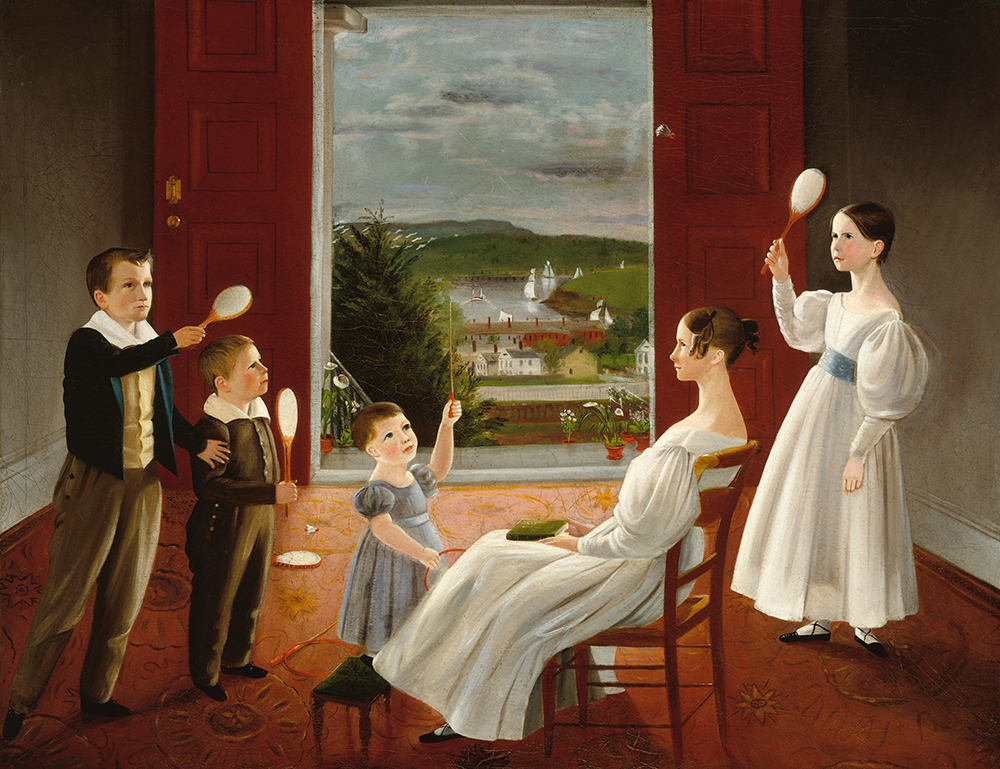
The Middleton children appear in only one novel, but they descend from characters in Austen’s juvenilia, the notebooks that Austen kept as a teen and where she essayed various sorts of melodramatic and satirical fiction, perfecting a sort of dry reportage of social cues that, in its very matter-of-factness, comes to assume a quality of utter madness. From Henry and Eliza:
But scarcely was she provided with the above-mentioned necessaries, than she began to find herself rather hungry, & had reason to think, by their biting off two of her fingers, that her Children were much in the same situation.
It is in precisely the same register that Austen narrates the spectacle of Lady Middleton and her young boys:
“John is in such spirits to-day!” said she, on his taking Miss Steele’s pocket handkerchief, and throwing it out of the window—“He is full of monkey tricks.” And soon afterwards, on the second boy’s violently pinching one of the same lady’s fingers, she fondly observed, “How playful William is!”
Unlike the protagonist’s children in Henry and Eliza, John and William Middleton are not precisely cannibals, yet they consume all the attention in the room, along with the clothes and handkerchiefs and fingers and time of the women who surround them. And it is this same unconscious material rapacity that makes children, through no necessary fault of their own, a bit monstrous.
Austen spent her life watching the women around her worn down by the incessant cycle of pregnancy and childbirth, and in her letters she addresses this bodily horror with a certain gallows humor that inspired her less perceptive readers to say that she hated children:
To Cassandra, November 1798: [Mary] still plagued with the rheumatism, which she would be very glad to get rid of, and still more glad to get rid of her child, of whom she is heartily tired.
To Cassandra, October 1808: Poor Woman! how can she be honestly breeding again?
To Cassandra, September 1814, two months into the seventh pregnancy of their sister-in-law Mary Gibson, wife of Frank Austen: Mrs. F.A. seldom either looks or appears quite well. —Little Embryo is troublesome I suppose.
And most damning, from a famous letter she wrote to one niece about another late in life:
Anna [LeFroy] has not a chance of escape;...Poor Animal, she will be worn out before she is thirty.—I am very sorry for her.—Mrs. Clement too is in that way again. I am quite tired of so many Children.
Austen addressed the anxiety of too many children in her fiction, most memorably in Mansfield Park, when Fanny Price journeys to Porstmouth to visit her parents and too numerous siblings, who, though the family is hardly rich, have been nearly as spoiled as the Middleton children. Especially instructive is the episode where Fanny’s two younger sisters are squabbling over a small silver knife that had belonged to their sister Mary, now deceased:
Betsey, at a small distance, was holding out something to catch her eyes, meaning to screen it at the same time from Susan’s.
“What have you got there, my love?” said Fanny; “come and shew it to me.”
It was a silver knife. Up jumped Susan, claiming it as her own, and trying to get it away; but the child ran to her mother’s protection, and Susan could only reproach, which she did very warmly, and evidently hoping to interest Fanny on her side. “It was very hard that she was not to have her own knife; it was her own knife; little sister Mary had left it to her upon her deathbed, and she ought to have had it to keep herself long ago. But mama kept it from her, and was always letting Betsey get hold of it; and the end of it would be that Betsey would spoil it, and get it for her own, though mama had promised her that Betsey should not have it in her own hands.”
Fanny was quite shocked. Every feeling of duty, honor, and tenderness was wounded by her sister’s speech and her mother’s reply.
The Prices are relatively poor, with nine children including Fanny (there had been ten, until poor Mary died), most of them living in a claustrophobically narrow house with walls thin enough that no petty spat goes unheard by the rest of the company. Unlike Lady Middleton, whose brood is much smaller, Mrs. Price does not spoil her children out of overly moneyed vanity but rather out of under moneyed short-term necessity: it is simpler and quicker to pacify the loudest mouth in the room than to arbitrate and offer moral instruction. The Price children are capable of beastly behavior not because children in Austen are wicked or poor people immoral, but rather because of their parents’ material circumstances and the sheer number of children.
This is an entirely sensible view, and it led Austen to offer humane advice when opportunity arose. When her niece Fanny was twenty-four, Austen recommended that she have children—just not yet: “by not beginning the business of Mothering quite so early in life, you will be young in Constitution, spirits, figure & countenance, while Mrs. Wm Hammond is growing old by confinements & nursing.”
Did Austen hate children? On the one hand, we have the testimony of the children who grew up around Jane and speak of her as a favorite mentor, a dispenser of playful wisdom and joyous mischief. On the other hand, we have a handful of critics, mainly male, who say that Austen must have hated children because she never had any. These critics do not pause to wonder if not having had children may have left her free to love them all the more.